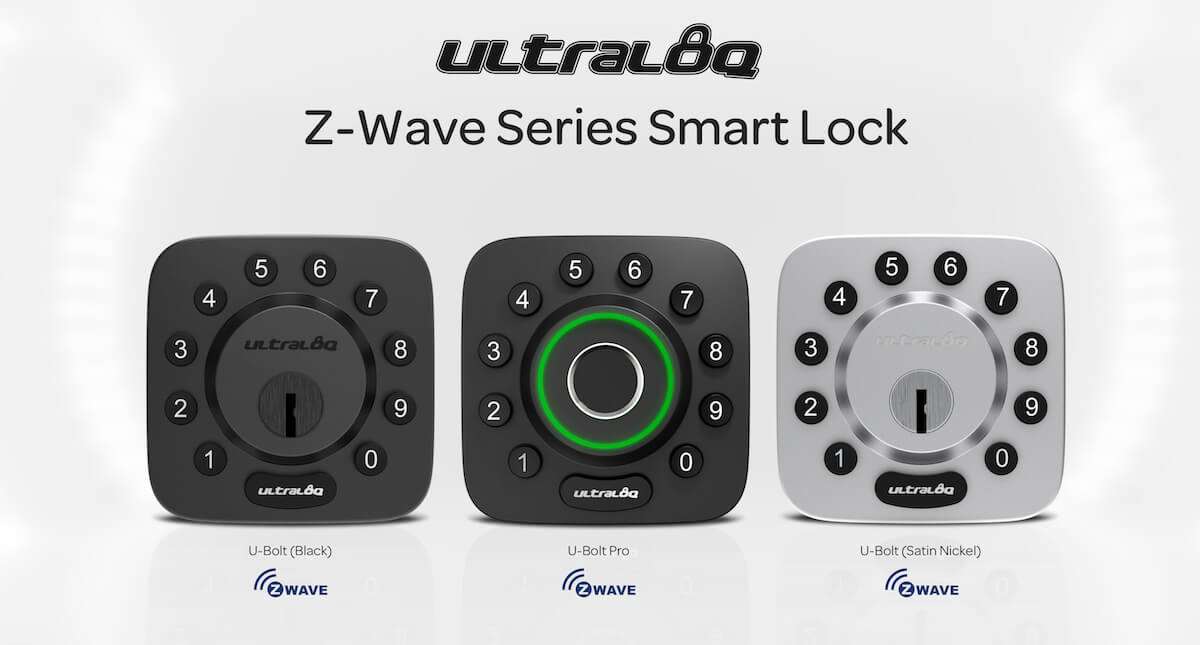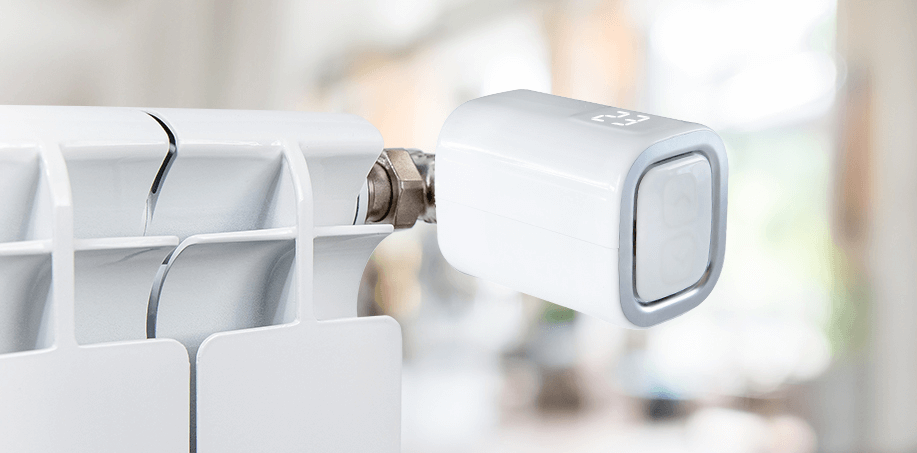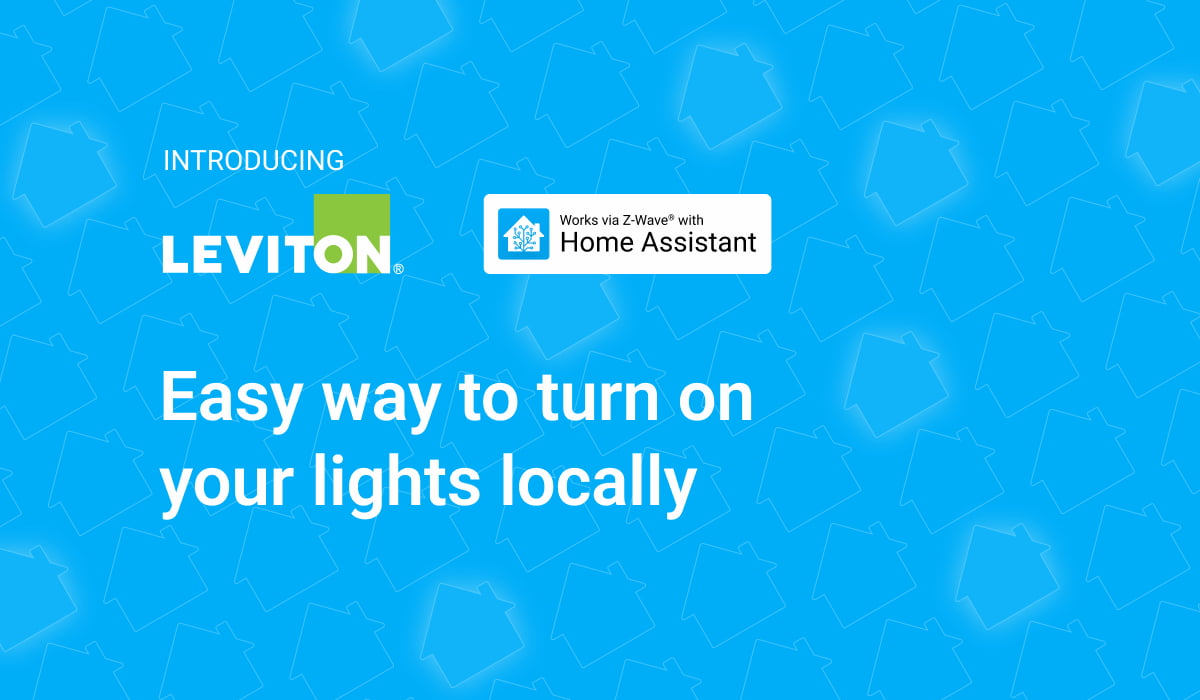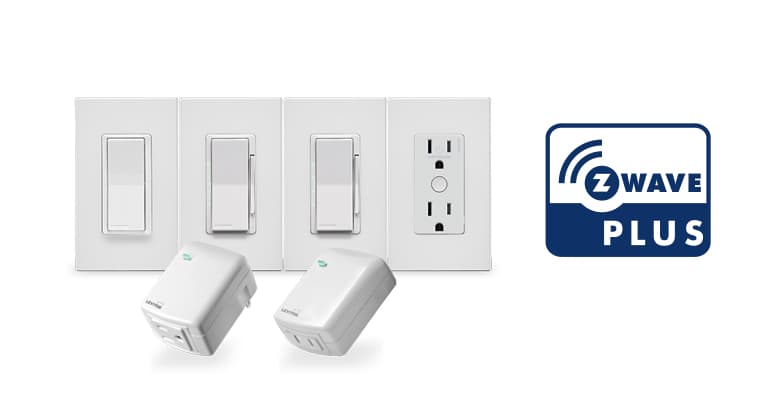Blog
Ultraloq joins Works with Home Assistant

Today we are excited to announce that Ultraloq by U-tec
As a partner, U-tec and Nabu Casa will be working together to ensure the best experience for connecting Ultraloq Z-Wave smart locks to Home Assistant, including testing the actual products in the Nabu Casa labs.

Ultraloq smart locks connect and integrate into Home Assistant using the Z-Wave integration (Z-Wave stick required). This means that connected locks work completely local, and updates coming from the device are instantaneously reflected in Home Assistant. This allows for the best user experience when building your smart home.
Learn more about the Works with Home Assistant partner program.
Third Reality joins Works with Home Assistant

Today we are excited to announce our next Works with Home Assistant partner: Third Reality!
Third Reality, Inc. is a smart home products company that has been working with Home Assistant for quite a long time but is now making it official. As a partner, Third Reality and Nabu Casa will be working together to ensure the best experience for connecting Third Reality Zigbee devices to Home Assistant.
Third Reality devices will connect and integrate into Home Assistant easily using the Zigbee Home Automation integration (Zigbee stick required). This means that the devices operate completely locally and state changes coming from the device are instantaneously picked up by Home Assistant. This allows for the best user experience when building a smart home.

Their smart home product portfolio includes switches, motion sensors, door sensors, water leak sensors, plugs, blinds, and newly added buttons. Giving users a full catalog of smart home products. For more information and products about Third Reality, you can visit their website
If you missed the announcement of the Works with Home Assistant partner program, make sure to check out the blog post.
2022.10: All over the place
Happy October! October is always a special month for the project. It is the month everybody starts working on their home automations again, the month that Hacktoberfest brings in lots of new contributions and contributors to the project (👋 welcome!), and also this year: the Month of “What the Heck?!”.
The Month of WTH already looks very promising, and many good and interesting issues, ideas, and suggestions to streamline have been proposed. Keep those topics and votes going ❤️.
Oh! And Home Assistant Core 2022.10! 🎉
Last month’s release was a big one; this month’s release mostly continues to improving on that. I guess it is no surprise that the biggest improvement can be found (once again) in Bluetooth! There is a lot more, though this release is a bit “all over the place”, which is actually kinda nice.
Enjoy the release!
../Frenck
PS: I noticed the Home Assistant SkyConnect is now available for pre-order 🥳
Read on →Short-term solutions on how to use smart home tech to save energy and money in Europe
Europe has entered an energy crisis and prices for electricity and gas are skyrocketing. Rates of €1/kWh and €3,40 per m³ of gas are not uncommon. People are turning to their friends in the Home Assistant community asking for help on how to save energy. With winter around the corner, they want a solution that they can apply before it gets really cold.
The goal of this post is to give an overview of things that Europeans can do to start saving energy and money today – even if they rent a home. The focus is on homes using radiators and a boiler connected to a thermostat.
Heating is a complicated topic and you will probably still have questions after reading this post. Don’t hesitate to join the Home Assistant community to discuss how to save energy (do make sure to search before asking a question). Join us in the forums in the energy category or come hang out in the #energy channel on our Discord chat server.
Take control of your heating
Most of your energy usage goes into heating your house in the winter.
Gas is more efficient than electricity to heat your house, unless you have a heat pump. So don’t turn off your gas heating and replace it with an electric heater as it will cost you a lot more money.
There are two ways of saving energy with heating. The first approach is to invest in more efficient technology to generate heat and improve the home insulation to stay warm. Things like getting a heat pump, improving insulation and getting thicker windows. Those things are not achievable before winter kicks in, so they are out of scope for this post.
The second way of saving energy is to use less of it. Governments have been advising to lower the overall temperature of your home, but putting the temperature too low can get a little too cold. Instead, you can be smarter about how you heat your home by installing smart thermostats, temperature sensors and thermostatic radiator valves (TRV).
 Photo of a Shelly TRV
Photo of a Shelly TRV
Smart Thermostats
A thermostat works by measuring the temperature. If the current temperature is below the target temperature set by the user, it turns on the heating until the home is the right temperature.
If you’re renting your home, you can skip this section as upgrading a thermostat is generally not an option.
The way a thermostat can help you save the most energy is by controlling the boiler, and preferably the boiler temperature. Heating the water is what drives the energy usage, so you wouldn’t want the boiler to heat the water to a higher temperature than is necessary to reach your target temperature.
Thermostats measure the temperature from the thermostat device. If the thermostat hangs in the last place in your home that gets warm, it might be heating more than you need. A smart thermostat can help by allowing you to pair extra temperature sensors to report the temperature in different rooms in your home. This allows the thermostat to turn off the heating earlier.
An extra bonus feature of a smart thermostat with remote control is that you’ll be able to change the temperature if you realize that you won’t be home at the scheduled time.
If you’re going to be in it for the long haul and want the easiest solution, you should invest in a smart thermostat that is part of a heating/cooling ecosystem that also has an API. Optimizing heating energy use is complicated and not something Home Assistant is good at out of the box. Instead, let that be managed by the ecosystem. The API allows you to still observe and influence it from Home Assistant to integrate presence and other data points the ecosystem is not aware of.
If you want full control over every part of heating your home, you don’t need to take the ecosystem route and instead invest in locally controllable thermostats, temperature sensors and TRVs and tie them together with Home Assistant. Here is an example to get started.
Recommended thermostats
It’s hard to give a single product recommendation here because there are so many different heating configurations and we are not aware of a single solution that works best in every case. Always check if the thermostat works with your boiler or other heating system you might use.
Home Assistant core developer Frenck researched this topic a couple of months ago for his own home and settled on Plugwise
Another popular solution is Homematic IP
Here at Home Assistant we prefer devices that work locally. Any device that stores your data in the cloud will eventually need a way to recoup the cost of hosting your data. It also means that if the company goes out of business, the devices tend to stop working. However, we understand that your priority today is saving energy. If the above solutions don’t work well for your home, you can also consider Netatmo
We don’t recommend Google Nest because its ecosystem is not fully featured enough, as it does not support TRVs.
Thermostatic Radiator Valves (TRV)
A TRV will replace the existing knob on your radiator with a smart one. This works too if you rent: just swap the old knob back when you move out. Installation generally takes just 5 minutes.
A TRV works like the thermostat of your house, but at the level of your radiator: you set the temperature that you want to reach, and it will open/close your radiator to get to the controlled temperature.
Having a TRV allows you to tune the temperature in individual rooms based on your schedule and/or planned usage, like only heating up the bathroom in the morning and around bedtime.
TRVs should be used to opt a room in/out of heating. Because heating the water in your boiler is still the biggest use of your energy, you should not use TRVs to turn off all radiators in your home or to reduce the temperature throughout the home. This should be done at the boiler level (usually via the thermostat). Keeping your boiler at the right (and not too high) temperature required to heat your home to the desired temperature is the biggest energy saver move you can do.
Recommended TRVs
All three smart thermostats that we recommended are part of a product range that include TRVs. If you went with one of those, we suggest you stick to the ecosystem.
There are two devices that we recommend. Both work independently but also have a local API to allow plugging it into Home Assistant.
Shelly TRV
This device works standalone and does not require a hub. Battery life is claimed to be 2 years. It offers a local API and integrates perfectly with Home Assistant.
Buy Shelly TRV
Aqara Smart Radiator Thermostat E1
The new kid on the block as it was just released. This TRV can be controlled directly from Home Assistant using Zigbee or via the Aqara hub. The hub can be locally integrated with Home Assistant via the HomeKit Controller integration.
Note: The vendor claims the device will support Matter in the future. It is unclear from their documentation if the device will speak Matter over Thread or that it will require their hub to expose the device over Matter. Our money is on the latter as that’s how they do HomeKit too.
Buy Aqara Smart Radiator Thermostat E1
Automations that can save energy
Once you’re able to control your thermostat and TRVs, you can start to save energy by automating your heating. Below are 5 useful automations to help with this.
Wrap up
Sadly, there is no golden solution to save energy that works for everyone everywhere. I hope that the above overview and tips will help you through the winter.
If some things are still not clear, don’t hesitate to join us in the forums in the energy category or come hang out in the #energy channel on our Discord chat server.
The month of 'What the Heck?!' 2022
TL;DR: For all of October, we are opening up to report any issue, suggestion, or annoyance you have with Home Assistant on the forums!
Welcome to the month of “What the heck?!” 2022! 🎉
Two years ago, we had the first month of “What the heck?!”, and it was great! So, this year, for the entire month of October, we are doing it again!
Home Assistant is growing fast, and the development pace is high! Every month’s release almost feels like a birthday present, full of new features and improvements. But did everything turn out the way it should? Are there things missing? Could it be streamlined more? Or, worse, maybe something started annoying you?
That is what this month is about!
Lowering the barrier for sharing WTH?! moments
We realize reporting bugs on our GitHub
While this is a common and reasonable process to collect, track, and process bugs, our issue tracking process might not be the ideal way to learn about your “What the heck?!” moments, small tweaks, and improvements that can make us all enjoy Home Assistant even more.
Today, we have opened up a Community Forum category as a safe, lower barrier place to tell about your Home Assistant “What the heck?!” moments. More importantly: discuss and vote on topics your fellow home automators have brought up.
What are we looking for?
Last week I’ve sent out a Twitter message
Enlighten me 💡 The whole community would celebrate and be shedding happy tears of joy if just this tiny little thing was added to Home Assistant…
The goal of that question: finding those little additions, annoyances, inconsistencies, and more. Things that, if addressed, could make a big difference or provide a more streamlined experience, making Home Assistant even more enjoyable.
I’ve got a whopping 200+ responses to that tweet
-
Helper entity to add/sum multiple sensor values like multiple energy
metering sensors.
(@NoahM_M
) - More of an app thing maybe, but moving the top dashboards view menu to the
bottom when on the phone.
(@teachingbirds
) - It be great if automations were aware that another process/interaction/human
had changed a setting. E.g., if I turn the lights back up, I don’t want the
auto-dimmer to continue auto-dimming.
“Abandon automation if the state is modified,” or something.
(@jameswood
) - Being able to select (using the mouse) the time period I want from a graph
instead of manually selecting hours/days from the dropdown would be a great
improvement in my humble opinion!
(@WouterSchoot
) - Toggling two lights should put them all in the same state. So if 1 light is
on and 1 off, toggling them together should make them both on, then next
toggle turn both off.
(@balloob
) - Option to retain associated history when renaming entity id
(@SadGamerGeek
)
These are great examples of the things we are looking for, the things we should share this month.
We are looking forward to all the things that will be brought up! And are hoping it will be just as successful as the previous edition.
Join us on the forums!, or read the FAQ below.
 So, when does Home Assistant trigger this moment for you?
So, when does Home Assistant trigger this moment for you?
Hacktoberfest 2022
This is not just the month of “What the heck?!”, it is also the month of
“Hacktoberfest
Hacktoberfest
The idea is that open source projects will gather entry-level bugs, features, and small improvements that current or future contributors can pick up and address; The month of “What the heck?!”, is a great way to provide these!
By participating in Hacktoberfest and by contributing four GitHub pull requests, you will complete the challenge and earn either a free t-shirt or have a tree planted.
This year, just like previous years, Home Assistant is open to and welcomes participants of Hacktoberfest ❤️
FAQ
-
“I have multiple things! Should I put all my stuff in a single topic?!”
No, please create multiple, smaller topics. There is no limitation on how many forums topics one can create for WTH. Each topic can be voted on, picked up, and resolved. Having multiple things stacked in a single forum topic makes resolving, discussing, and voting on them hard.
-
“Is everything reported going to be fixed/addressed?”
There is no guarantee that will happen. The goal is to lower the barrier to report things for one month. Home Assistant mostly relies on contributors to address or improve the project. However, we think collecting feedback this way can tremendously help during Hacktoberfest
. -
“I really want this new integration or add-on to be implemented, so I can use my devices. Is this the right place for it?”
No, this event is not for requesting new add-ons or device/services integrations. Please use the “Feature Requests” forum category instead.
-
“My WTH topic is one of the top-voted ones, so it is going to be fixed/addressed, right?”
This is not a contest. Voting will help with visibility and getting a feeling of the impact the suggestion might have. However, it might be difficult or too big to implement. Home Assistant mostly relies on contributors to address or improve the project. A topic with lots of votes is more likely to be noticed by a contributor, but it is not guaranteed to be picked up.
-
“I’ve found a bug and am comfortable with GitHub. Where should I report my issue now?”
If you are comfortable with using GitHub, please, by all means, file an issue report on GitHub
instead.
2022.9: Home Assistant Birthday Release!
Home Assistant Core 2022.9! 🎂
If you don’t know yet, this month is Home Assistant’s birthday! 🎉🎉 On September 17th, 2013 Paulus Schoutsen
The automation engine is a big reason why Home Assistant has so many users. So in the spirit of Streamlining Experiences, we thought a revamp was due. You will notice some huge improvements to the look and feel of the Automation Editor that we think will greatly improve its usability. I know I for sure see a huge difference!
Now I know that everyone usually expects @frenck
– Zack
Read on →2022.8: You can fix it!
Home Assistant Core 2022.8! 🏖
While many of you enjoy a well-deserved vacation around this time, it seems like it didn’t slow down the development/contributions made to Home Assistant. What a beautifully packed release this is again!
I’m super stoked about the added Bluetooth support, opening up a whole new world of devices to Home Assistant. I’m even more excited about the new repairs and supported brands features. Those are going to help out A LOT 😃.
Do you know what is really great about this release? All the major features and changes announced in this release are a step forward to our current goal: Streamlining experiences.
Enjoy the release!
../Frenck
Read on →Leviton joins as a Works with Home Assistant partner

Today we are happy to announce our first Works with Home Assistant partner: Leviton!
Leviton
Leviton Z-Wave devices work locally and integrate seamlessly with the Z-Wave integration in Home Assistant (Z-Wave stick required). As all connectivity is happening locally, status updates and controlling your devices happen instantly in Home Assistant. Each device that is connected to power will also act as a Z-Wave router to extend your Z-Wave mesh network.

Leviton Decora Smart Z-Wave Devices include their DZ6HD dimmer, DZ15S switch, ZW4SF Fan Speed Controller, DZPD3 Plug-in Dimmer, DZPA1 Plug-in Switch, and ZW15R Outlet. All of these devices can be found on their Amazon store

If you would like to learn more about the Leviton products and integration check out their integration page! Leviton will also show up in the integrations list in Home Assistant version 2022.8!
If you missed the announcement of the Works with Home Assistant partner program, make sure to check out the blog post.
Introducing the Works with Home Assistant program
This blog is outdated. For the latest information on the partner program, please visit our Works with Home Assistant webpage
With Home Assistant, we integrate with over 1000 different APIs. The majority of these integrations are created and maintained by the Home Assistant community. Over the years a number of companies have stepped up to work with our community offering samples and engineering support. In a few cases, we saw companies pick up the maintenance of integrating their products in Home Assistant.
Sadly, a couple of times it happened that companies went silent after their initial contribution, causing users to be wondering why new devices are not being supported. We want to protect our users from investing in products for their homes that won’t work well with Home Assistant.
Today we’re introducing the Works with Home Assistant program to allow manufacturers to show their support and commitment to Home Assistant and its community.
The program requires manufacturers to maintain the integration of their products in Home Assistant, offer a good user experience, provide product samples and give us an engineering contact to escalate issues. In return, manufacturers will be able to use the “Works with Home Assistant” badge on their products and documentation. The terms of the Works with Home Assistant program are enforced in an agreement signed by both Nabu Casa and the manufacturer.

With Home Assistant we are always working on educating our users about preferring local control and open standards when acquiring new products. This is also reflected in the “Works with Home Assistant” badges.
There are manufacturers that are creating products that integrate into Home Assistant using standards like Z-Wave, Zigbee, or Matter (soon). In these cases, the integration is maintained by the Home Assistant community and Nabu Casa. These companies can still become a member of the Works with Home Assistant program but are relieved from integration maintenance.
Products that are approved for the Made with ESPHome program
For more information for manufacturers, see our Works with Home Assistant portal.
2022.7: A stunning performance

Home Assistant Core 2022.7! ☀️
This was one exciting and busy month! In case you’ve missed it, there was
a Matter in Home Assistant workshop
Meanwhile, preparations are happening for the upcoming Matter and of course, the soon-to-be-released Home Assistant Yellow! 💛 More about that soon™.
This release is definitely representing the “streamlining experiences” motto we have been using. The performance improvements in this release are once more: stunning! Furthermore, there are some wonderful new features to explore too.
This release has the perfect mix! I’m sure there is something in here you like. So without further due: Enjoy the release!
../Frenck
Read on →


